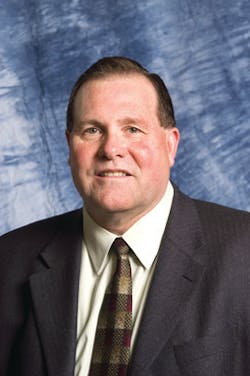One tradition of the fire service is the decentralized placement of resources and services in local neighborhoods. Many believe fire stations represent the most visible example of government’s investment in the overall safety and well being of the people in the community. Members of fire departments live and work in the neighborhoods around their fire stations seven days a week, 24 hours a day. They are embedded into the fabric of communities, and in these times of increased public scrutiny, fire departments may be in the very envious position of being able to build on traditional feelings of trust and good will while strengthening their level of influence.
This reality provides a significant opportunity for the fire service, but do fire departments take full advantage of it? Fire departments should be active community participants in a mission-related way, involved in key decisions and supported by community leaders. This does not happen by chance and requires more than just political involvement advocating for or against issues and candidates, even though this is very important as well. This column explores the integration of the fire and life-safety mission into the core structure of the community in a way that improves customer service and enhances the overall standing of the fire department in the community. Doing so can pay off at all levels of government when policy decisions are being made that impact the local fire department or the fire service in general.
Many fire departments (small and large) view their community standing as an important element in their overall success, but some fail to make that important connection. The fire service cannot isolate itself from other organizations, community issues or participants and expect to maintain credibility and prosper in a political arena that encourages partnerships, coalitions and positive relationships. The fire service needs the help of external decision-makers to be successful, and so does everyone else who relies on those decision-makers to provide operational resources. There’s a lot of competition.
It’s not complicated
Successfully implementing this community-based strategy is not complicated. Many fire departments have created programs and activities that enhance their involvement and influence. In doing so, customer service and firefighter safety have been improved as well. These programs and activities include:
• Fire station tours and open houses
• Blood pressure checks conducted at fire department facilities, health fairs and other events
• Immunization clinics
• Vehicle child safety seat inspections
• Fire and injury prevention
• Public education programs that include targeting specific high-risk groups
• Explorer or cadet programs and other development opportunities for youth
• Attendance at community events with the joint goals of educating and protecting the attendees
• Providing a link to services designed to match customers with social service needs where necessary
• Serving as partners in community service and charity events
• Creating and extending inclusive media relations programs
• Creating an expectation that fire department leaders interact and participate with community leaders in a wide range of ways
These represent only some of the many ways fire departments open their organizations, communicate and market what they do, and get involved as active partners and neighbors. Together, they translate into examples of leadership, visibility, compassion and commitment to service. It also sends a clear message that the fire department cares and is a critical partner in the community.
Stay in the game
We are living in a time of constant transition involving the role of government and the need to work together to address important societal goals. To garner political and community support for what we do, the fire service must be in the game every day. Efforts at the local level by fire departments can help lift our individual and collective standings in a political environment that is often referred to as a stalemate.
Let's not just be victims of the times. While local unions and other membership organizations do what they have the capability to do in the process, fire department management must ensure that the organization as a whole is also doing all it can do by enhancing the community service efforts and visibility of the department. It can really pay off in short- and long-term ways.
For more news and training on fire service politics, visit: http://www.firehouse.com/topics/politics-law.
DENNIS COMPTON, a Firehouse® contributing editor, is a speaker and the author of Progressive Leadership Principles, Concepts and Tools, the When in Doubt, Lead! books, the book Mental Aspects of Performance for Firefighters and Fire Officers, and many articles, chapters and other publications. He was the fire chief in Mesa, AZ, for five years and assistant fire chief in Phoenix, where he served for 27 years. Compton is past chairman of the Executive Board of the International Fire Service Training Association (IFSTA) and past chairman of the Congressional Fire Services Institute’s National Advisory Committee. He is currently chairman of the National Fallen Firefighters Foundation Board of Directors.
About the Author

Dennis Compton
Chief
DENNIS COMPTON is a well-known speaker and the author of several books, including his most recent offering titled Progressive Leadership Principles, Concepts and Tools. He also authored the three-part series of books titled When in Doubt, Lead, the book Mental Aspects of Performance for Firefighters and Fire Officers, as well as many articles, chapters and other publications. Compton was the fire chief in Mesa, AZ, for five years and an assistant fire chief in Phoenix, where he served for 27 years. He is past chairman of the Executive Board of the International Fire Service Training Association (IFSTA) and past chairman of the Congressional Fire Services Institute (CFSI) National Advisory Committee. Compton is currently the chairman of the National Fallen Firefighters Foundation (NFFF) Board of Directors and co-chairs the Fire Service-Based EMS Advocates Steering Committee.
